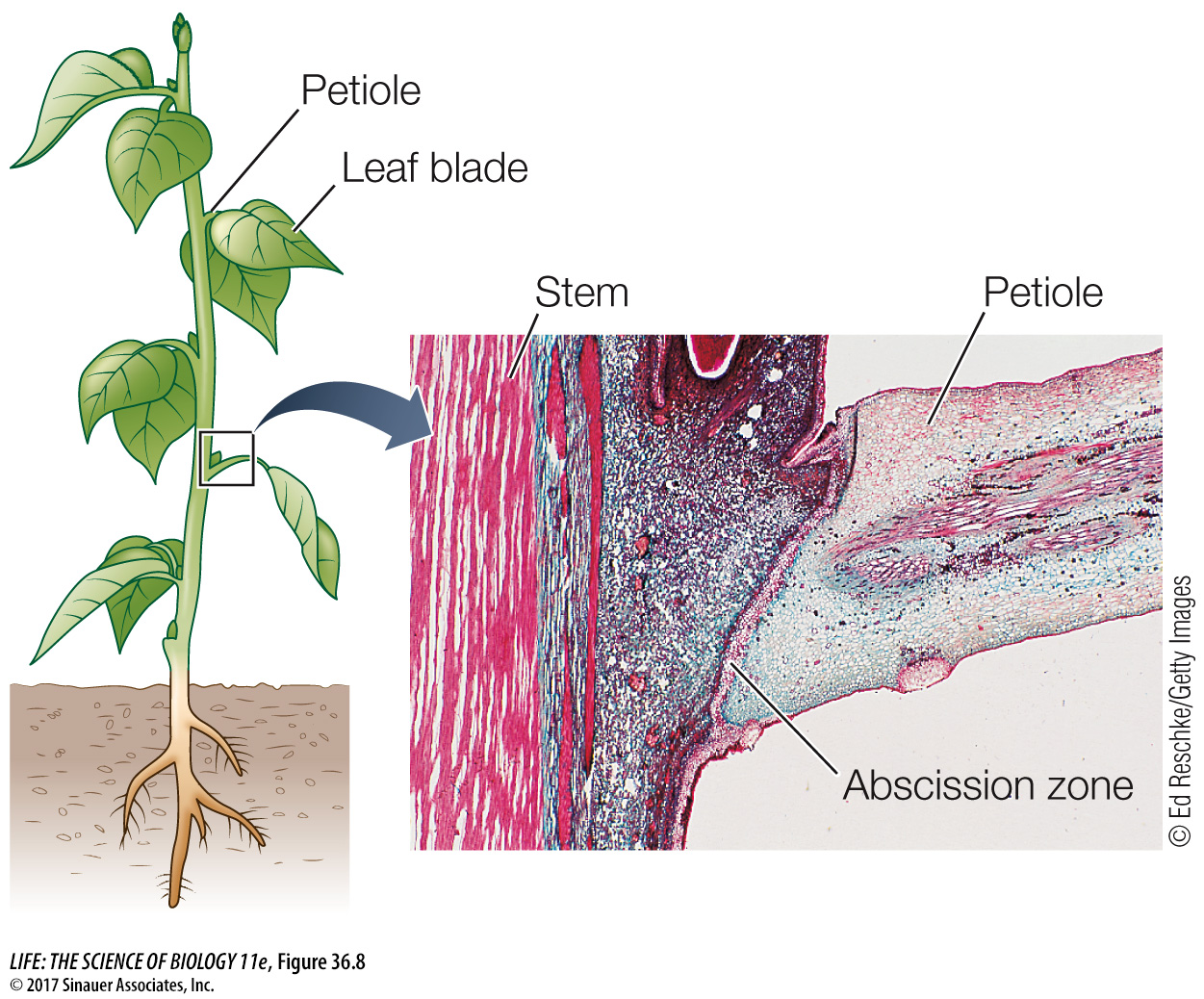Auxin affects plant growth in several ways
Like the gibberellins, auxin has many roles in plant development. Auxin affects the vegetative and reproductive growth of plants in several ways.
ROOT INITIATION Cuttings from the shoots of some plants can produce roots and develop into entire new plants. For this to occur, parenchyma cells in the interior of the shoot must dedifferentiate and form an apical meristem of a new root. These changes are similar to those that take place in the pericycle of a root when a lateral root forms (see Figure 33.12). Shoot cuttings of many species can be made to develop roots by dipping the cut surfaces into an auxin solution. These observations suggest that in an intact plant, the plant’s own auxin plays a role in the initiation of lateral roots. Commercial preparations that enhance the rooting of plant cuttings typically contain synthetic auxins.
LEAF ABSCISSION Auxin inhibits the detachment of old leaves from stems. This detachment process, called abscission, is the cause of leaves falling from some trees in the autumn. Many leaves consist of a blade and a petiole that attaches the blade to the stem. Abscission results from the breakdown of a specific part of the petiole, the abscission zone (Figure 36.8). If the blade of a leaf is cut off, the petiole falls from the plant more rapidly than if the leaf had remained intact. If the cut surface is treated with an auxin solution, however, the petiole remains attached to the plant, often longer than an intact leaf would have. The timing of leaf abscission in nature appears to be determined in part by a decrease in the movement through the petiole of auxin produced in the blade.

APICAL DOMINANCE Auxin helps maintain apical dominance, a phenomenon in which apical buds inhibit the growth of axillary buds (see Figure 33.1), resulting in the growth of a single main stem with minimal branching. Apical dominance can be demonstrated by an experiment with a young seedling. If the plant remains intact, the stem elongates and the axillary buds remain inactive. Removal of the apical bud—
FRUIT DEVELOPMENT Fruit development normally depends on prior fertilization of the ovule (egg), but in many species treatment of an unfertilized ovary with auxin or gibberellins causes parthenocarpy—fruit formation without fertilization. Parthenocarpic fruits form spontaneously in some cultivated varieties of plants, including seedless grapes, bananas, and some cucumbers.
CELL EXPANSION Cell division followed by cell expansion is what causes plant growth. Because the plant cell wall normally prevents expansion of the cell contents inside the cell membrane (see Key Concept 33.1), the cell wall plays a key role in controlling the rate and direction of plant cell growth. Auxin acts on cell walls to regulate this process.
Cell expansion is driven mostly by the uptake of water, which enters the cytoplasm of the cell and accumulates in its central vacuole (see Key Concept 33.1). Growth of the vacuole accounts for most of the increase in volume of a growing cell, and the vacuole often makes up more than 90 percent of the volume of a mature cell. As the vacuole expands, it presses the cytoplasm against the cell wall, and the wall resists this force (the basis of turgor pressure). The cell wall is an extensively cross-
The acid growth hypothesis explains auxin-

Q: Where else in the plant cell are proton pumps important?
Proton pumps are present in mitochondria and chloroplasts, where they are involved in the production of a proton gradient in chemiosmotic synthesis of ATP.
Animation 36.3 Auxin Affects Cell Walls